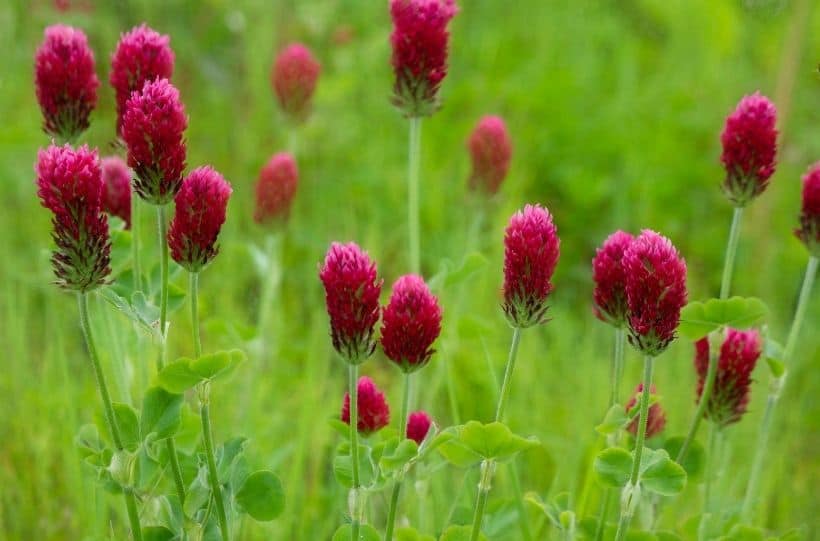How to Grow Cover Crops to Improve Your Soil
Have you grown heavy feeding plants that tend to drain and deplete the soil? Are you taking a season off of gardening and want to make the most of the space while you are away.
A great way to make use of your space and nourish your garden is to plant cover crops.
Cover crops are a valuable option and a smart choice to maintain strong, healthy, and balanced soil that can provide your family with nutritious food for generations.

What are Cover Crops?
Cover crops otherwise referred to as green manures are crops that are grown over a large area in the off-season to help nourish the soil. These plants help in multiple ways.
Some plants help to fix nitrogen levels in the soil due to bacteria that grow along with the roots and they help by adding organic matter to the soil when you till the remaining parts of the plant.
These crops can be food or simply plants that help to benefit the soil and even flowers that can help bees.
Cover crops can help to replenish your soil and allow your plants to thrive and grow without depleting your soil. Anyone can use cover crops in their garden to help improve the overall soil quality and reduce the need for fertilizers in the garden.
What are The Best Cover Crop Options?
Cover crops can be a great way to add to your food stores while improving your soil quality and preventing erosion when you can not maintain your garden beds. Cover crops are usually: grains and grasses, brassicas, or legumes.
These crops are easy to grow and can thrive even with some neglect as well as offering your family food. Edible cover crops include radish, arugula, alfalfa, melons, green beans, peas, rye, oats, wheat, and buckwheat. After harvesting any of these plants you can till the stalks into the soil.
If you need a quick-growing cover crop for your garden beds after harvesting your cold-weather plants, but before your fall plants are ready to go in, plant several bush bean plants. These beans are prolific producers while really nourishing the soil while they grow and leaving plenty of stalks behind.
When choosing the most valuable cover crop for your garden look for what you will be able to make the most use of. A great option can even be to grow several cover crops in your garden beds to help make the most of every inch of gardening space and keep a variety of food on hand for your family. Also, look for plants that can be companion planted to get the most value and food for your space.
Non-edible cover crops can be a great way to prevent erosion in your garden beds and even help to attract and feed local pollinators like bees and butterflies.

This is where cover crops like clover can be a wonderful addition though they do come with some challenges when it comes to keeping them at bay once you are ready to use your soil again. If you need to skip having a garden for a year, try sowing your garden beds with clover which will provide for the bees while also nourishing your soil.
How to Grow Cover Crops
Growing cover crops is easy but the process can be a bit different depending on the plant you are choosing to grow.
For most gardens, the process is fairly straightforward. Start by tilling your soil and adding fresh compost this will help to ensure that your soil has enough nutrients to grow the cover plants.
Cover crops should be directly sown as thick as you can for the space. Using square foot gardening methods for spacing will allow you to pack more of the crop into your space so you can better nourish the soil and get a larger crop if you are planting an edible cover crop.
Cover crops are a great way to fill a garden bed that needs some time to rest and replenish after growing something like potatoes.
Most cover crops are very low maintenance making them easy to add to your garden. Because these crops are low maintenance and their primary function is to be tilled into the soil if some are destroyed by pests you still get a great benefit from the overall crop.
What to do After Harvesting Your Cover Crops
After you have harvested your cover crops you can use shears or loppers to cut up the remaining parts of the plant to make it easier to till directly into the soil.
Once it is broken down you can then till this into the soil along with some fresh compost to create a well-nourished soil ready to plant even heavy feeders.
You may choose to allow the plants to die back before tilling in. This is not necessary if you are in a hurry to get another crop in but allowing it to die back can help add slower breaking down organic matter that can help improve clay or sandy soil.
If you have a large tiller that runs without manual labor you may choose to skip breaking the plants down at all and simply till the complete stalks into the soil.
Cover crops often get a very large harvest at once due to how much of a crop is planted. These large harvests are perfect for preserving for later use. Try canning, dehydrating, and freezing.
You may find some volunteers from your cover crop popping up when you start your next crop. Mulching with a thick mulch can help reduce this so you can pull weeds less often. This should not cause more growth than your normal gardening does unless you allow your cover crop to go to seed.
And for more on helping the soil, be sure to read these articles next:
